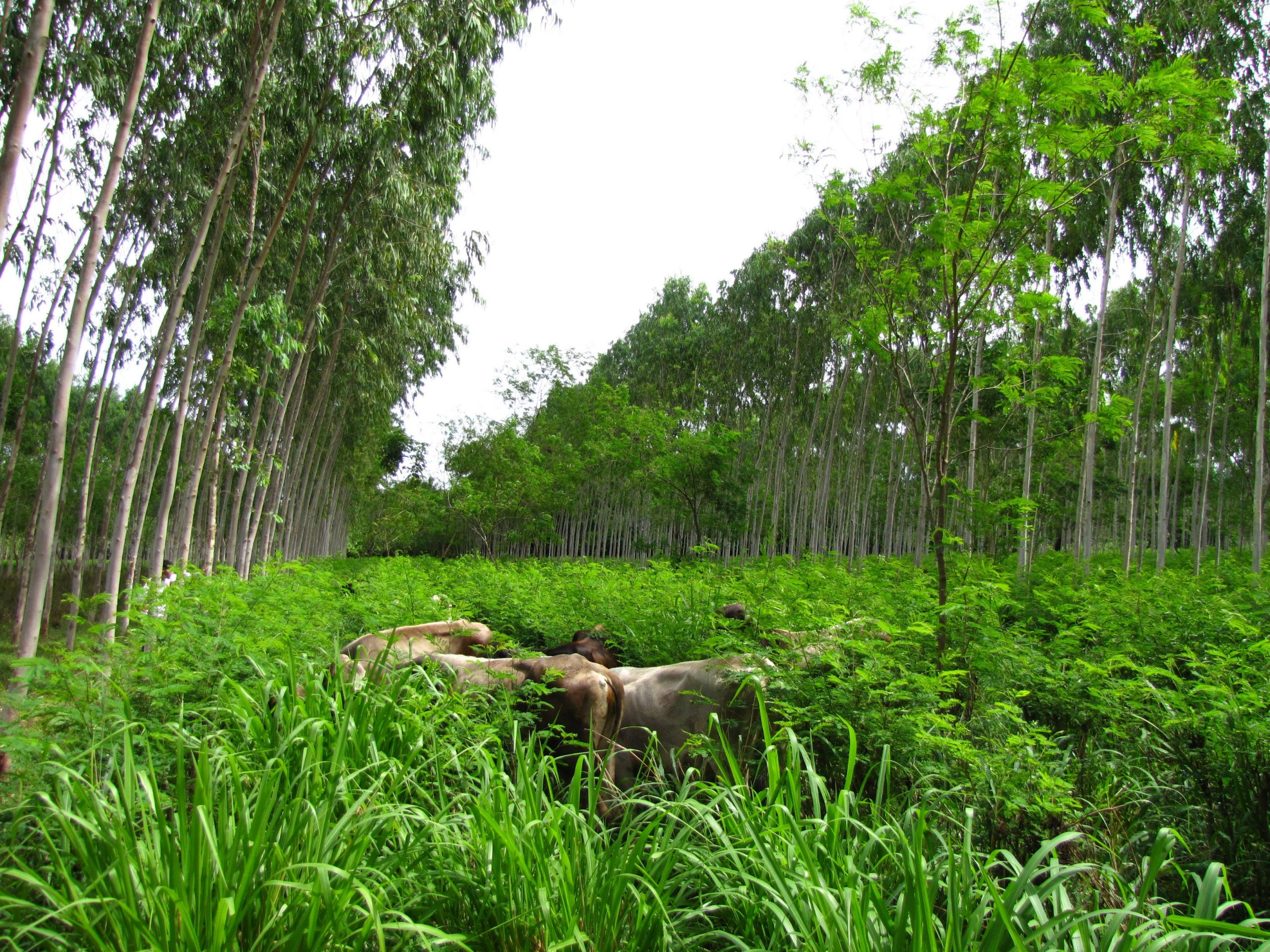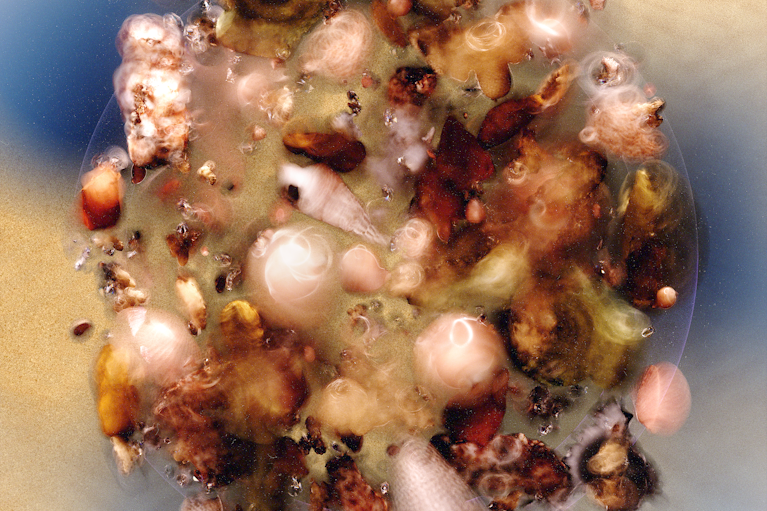Eric Toensmeier is a lecturer at Yale University and a senior researcher with the climate change-focused nonprofit Project Drawdown. He is the author of “The Carbon Farming Solution.”
When I began investigating how to capture carbon dioxide to fight climate change a decade ago, I had no way of knowing which tool would have the greatest potential. Years later, in 2015, when the environmentalist and entrepreneur Paul Hawken hired me to work for Project Drawdown to help model the impacts of 23 land-based climate change solutions, many on our team were surprised when a relatively unknown solution called “silvopasture” emerged as the most powerful agricultural production practice — the ninth most powerful method overall.
Silvopasture systems combine trees, livestock (ruminants like cattle, sheep and goats) and grazing. Ranchers and pastoralists plant trees or manage the land for spontaneous tree growth. The trees provide shade, timber and food for livestock. In most silvopasture systems, the carbon captured in soil and trees more than makes up for the greenhouse gases (methane and nitrous oxide) that ruminants emit through belches and flatulence. One study of intensive silvopasture in Colombia found that emissions from livestock were equal to a quarter to half of the carbon sequestered in soil and biomass.
At first, adding trees to grazing land seems counterintuitive. Won’t the trees shade out the grasses below? Surprisingly, well-designed silvopasture systems actually increase production of meat and milk, in part because the shade from the trees reduces stress on livestock. Intensive silvopasture can more than double production of meat and milk on the same area of land.
Though little known to the public, silvopasture is currently practiced on an estimated 15 percent of the world’s grazing land. Yet scarcely a word about the method is found in key climate change documents and agreements. When it is mentioned, it is lumped in with other “agroforestry” practices that integrate trees with crops and sometimes livestock. Cropland agroforestry has recently been shown to have a much greater climate impact than previously believed.
Livestock production is a major source of greenhouse gas emissions. Over 14 percent of human-caused emissions are the result of livestock production, with methane from ruminant livestock like cattle the largest contributor. Grazing systems are responsible for 20 percent of this, though they only produce about 4 percent of the global meat and milk supply.
There has been much discussion about improved, or “managed,” grazing systems to mitigate grassland climate impacts by modifying the intensity and timing of grazing. This is indeed important, but the impacts per hectare are usually very modest — it is the great extent of global grasslands that acts as a multiplier. Project Drawdown found that silvopasture can have double the global impact of managed grazing, on only a fifth of the land. Long-term storage of carbon in silvopasture soil is up to five times higher than managed grazing alone — not to mention the carbon stored in the biomass of the trees.
Silvopasture is not the solution for all grazing land. In many cases, grasslands are too dry to support healthy tree growth. Other limitations include high establishment costs, the resources to choose the right tree species (and the right spacing between them) and often a significant learning curve for livestock producers to learn to care for the trees. A final and serious drawback that silvopasture shares with other land-based carbon storage practices is that this stored carbon can be lost if the land is degraded, which can happen due to human mismanagement but also as a result of climate change itself.
Could silvopasture make beef climate-friendly? On a given piece of land, yes. But without serious deforestation, there’s just not enough land in the world to meet global beef and dairy demand with silvopasture and managed grazing alone. Americans consume 50-60 grams of animal protein per day, with much of the rest of the world trending toward greater livestock protein consumption. Improved grazing systems, including silvopasture, can probably only provide enough for 7-18 grams per person per day. Making livestock production more climate-friendly must go hand-in-hand with reducing demand through diet change and cutting back on food waste if aggressive climate targets are to be met.
How much land is potentially suitable for silvopasture? More than one-fifth of our planet’s 3.5 billion hectares of grassland is humid, with more than enough rainfall for tree growth. Appropriate tree species can be grown in some of the drier areas as well. Project Drawdown has called for an additional 73 million hectares (about 2 percent of global grassland) of silvopasture by 2050. This land could remove and store roughly 31 billion tons of carbon dioxide between 2020 and 2050 — the same impact that Drawdown projects for rooftop solar and commercial LED lighting combined.
What needs to be in place to achieve this goal? For ranchers and pastoralists, access to finance and information are key. It can take three to four years to recover the costs of converting land to silvopasture. Not only ranchers and pastoralists but also policymakers, lenders and researchers must overcome the psychological barrier against growing trees on grazing land.
Recent decades have seen an explosion of silvopasture in Latin America. The Costa Rican, Colombian and Nicaraguan governments all offer payments to ranchers to convert to silvopasture. In Costa Rica, a remarkable 90 percent of pastures now incorporate trees. The Colombian National Federation of Cattle Ranchers has embraced silvopasture.
Most scientists agree that there is still time to step back from the precipice of catastrophic climate change — but doing so requires profound and rapid changes in all sectors of civilization. Grazing of livestock — the world’s largest land use — is no exception. We should be working together now to add trees to pasture and rangeland, wherever it is feasible.
Silvopasture belongs at the center of international efforts to address climate change. This year, the Intergovernmental Panel on Climate Change is writing a special report on climate change and land. The team of researchers working on the report should not miss this important opportunity to explicitly discuss silvopasture. Let’s not leave one of our most powerful tools off the table any longer.
This was produced by The WorldPost, a partnership of the Berggruen Institute and The Washington Post.





